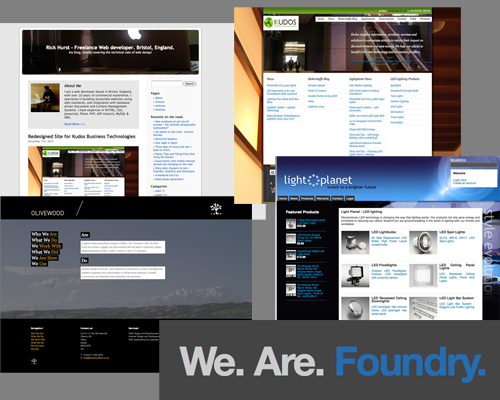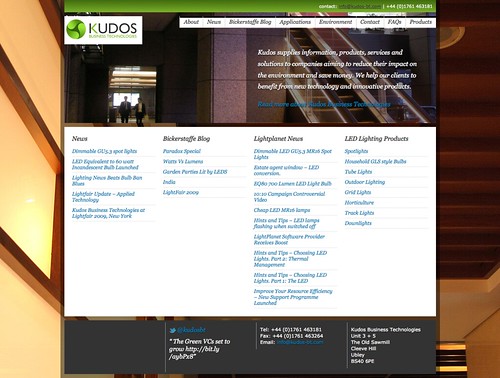Freelance vs Permanent a few years on
I love having this blog to remind me where I was at and what I was thinking a few years back. Just under four years ago I announced I was going freelance, and I checked in again about a month later, and then a year later, but haven’t spoken much about it on this blog since. It’s been an interesting ride to say the least so I thought it might be time to write down a few words about the highs and lows.
To put you firmly in the picture of the freelance web developer mindset i’m writing this while I should be working – this causes me anxiety for two reasons: firstly, a task I am supposed to be working on, already overdue, will become more overdue. Secondly, any time spent on this blog post is time spent not earning money. Another way of looking at it is that while i’m blogging i’m working on marketing, so maybe that negates the second point somewhat, but not the first.
Highs
- The satisfaction of working for yourself – I’ve got the skills to pay the bills! Whatever doubts and problems i’ve had along the way, i’m making a living using skills i’ve built up over the years, and I can’t dispute the sense of satisfaction you get from that.
- Flexibility and Freedom – I enjoy not having to ask permission if I need to leave early or start late, especially as I have a child.
- The Money – Freelance work has the potential to pay well.
- Work / Life Balance – when I can make it work
Lows
- The loneliness of working by yourself – Not so much in a social sense, but more the responsibility of playing every role in a one-man band – being the account handler, the book keeper, new business development manager, customer services, and not to mention occasionally writing some code.
- Flexibility and Freedom – sure I don’t have to ask permission if I want to start early, leave late or take some time off, but websites don’t build themselves and when work stacks up, (which it does constantly) I end up working very long hours.
- The Money – Not always as lucrative as you’d imagine – I’ll expand on this.
- Work / Life balance – when it goes wrong
The things I miss about permanent
Some of these points will vary depending on the employer, but one of the things I miss is the investment and support that an employer can bring – paying for me to attend conferences and time to learn new skills, the camaraderie with co-workers and the skills you pick up from co-workers. Then there’s the regular pay-cheque, which brings me to..
Money
The other big consideration with freelance is the regularity of pay – you might be set to receive a big payment, but what if it doesn’t turn up for six months? Another consideration is how much you expect to earn. People are always shy to talk about what they earn, and that includes me. Whenever a client asks me to quote day rates I can picture the cogs turning in their minds as they come up with an ad-hoc calculation of what they think I am earning. The truth is that it doesn’t always work out like you would imagine.
Much of the time I put in way more time than was originally quoted for, and natural gaps between productive work, meetings, holiday, illness, pitching for projects, unpaid maintenance, support, bookkeeping, procrastination etc. all conspire to even out what could be lucrative earnings into very average earnings. I never really know what i’m earning until after the year has passed and I do the calculations for tax returns. The carrot on the stick for a freelancer is always those potential earnings though – whereas with a permanent job your salary is capped (but guaranteed), there is always potential to earn more with freelance. However, my goal with freelance was always to earn a modest salary but take more time off. I’m still working on the second bit.
So would I ever consider a permanent role?
I’ve thought about this and have come to the conclusion that i’m probably unemployable. That last sentence isn’t going to sound too good on a CV is it! The reason I say this is that what I strive for in my freelance life I would also be looking for in a permanent role, and when I summarise what i’m looking for it sounds like a list of demands from a petulant celebrity:-
- Flexibility/ Freedom with work hours/ days/ location
- Good Salary – at least on par with a reasonable freelance year, when holiday etc. accounted for.
- Some profit related incentive to keep working when the going gets tough (shares/ profit share/ bonus)
- Training/ Conference budget
I think one thing that would clinch it though is the opportunity to work somewhere exciting, maybe abroad in the future – (mountain view sounds fun!), or working as part of a specialist team that would allow me to take things to the next level professionally.
The other thing that would possibly convince me to go permanent would be the opportunity to get my foot in the door of a company or organisation that would lead me back to my first choice of career in environmental science/ renewable energy – that’s another blog post though!









http://www.ldexterldesign.co.uk/2010/07/part-1-how-to-freelance-successfully/
Best,
ldexterldesign 2011-03-04 04:34:22